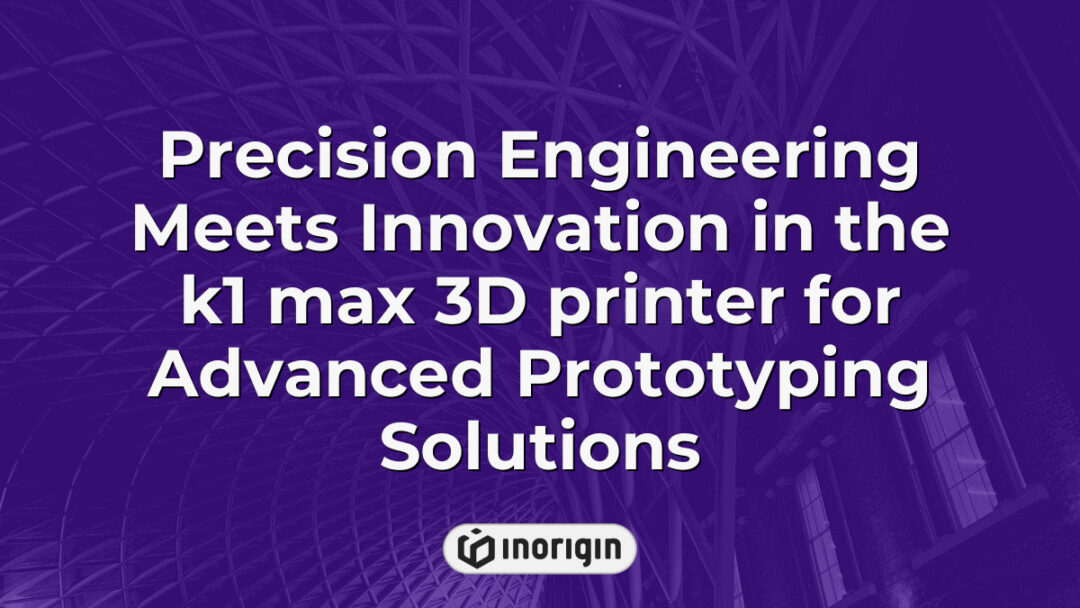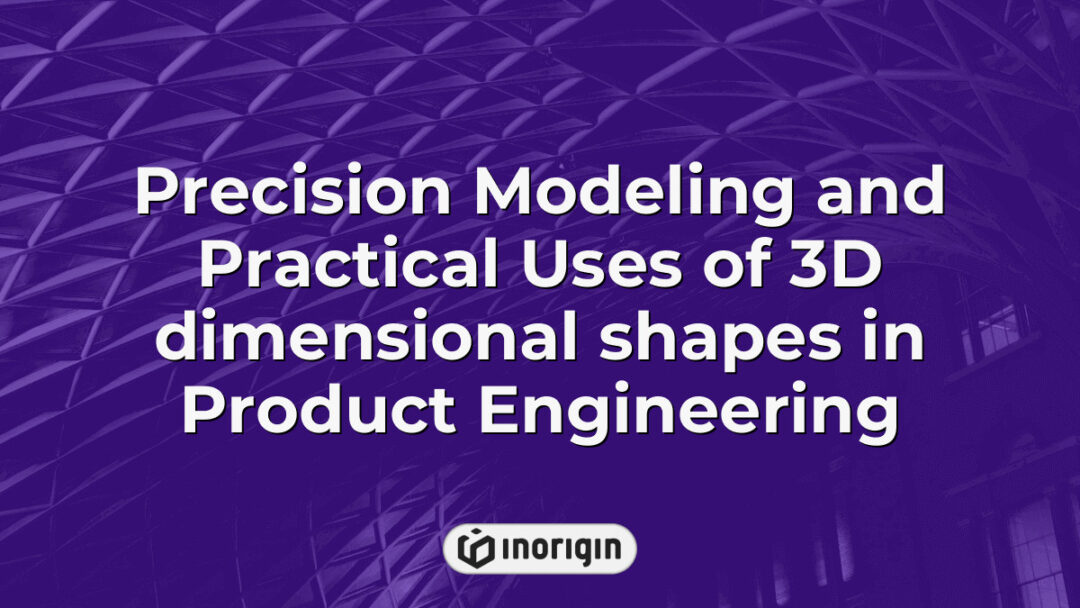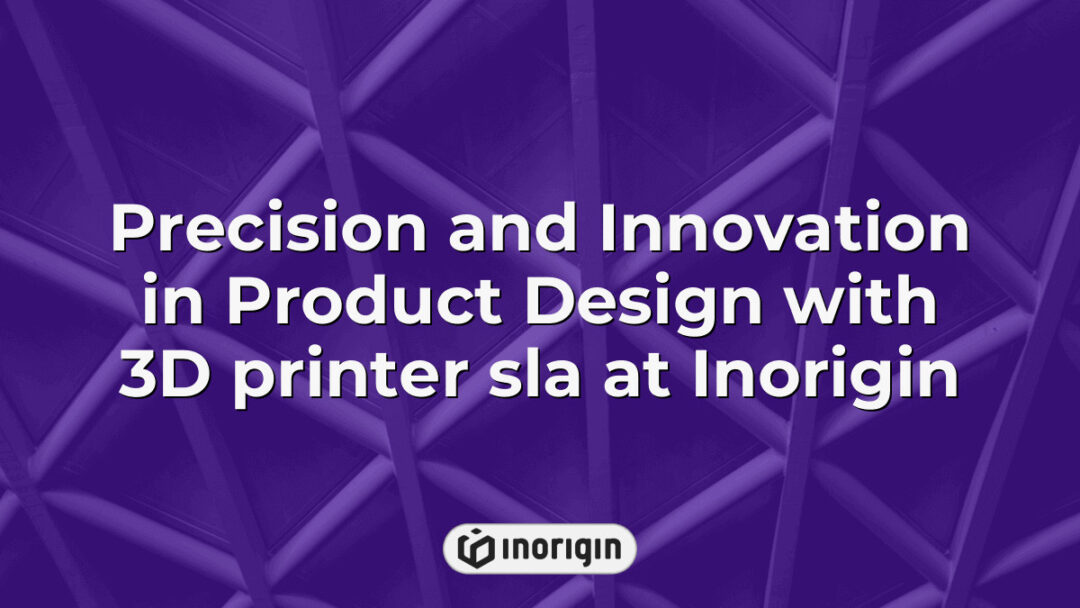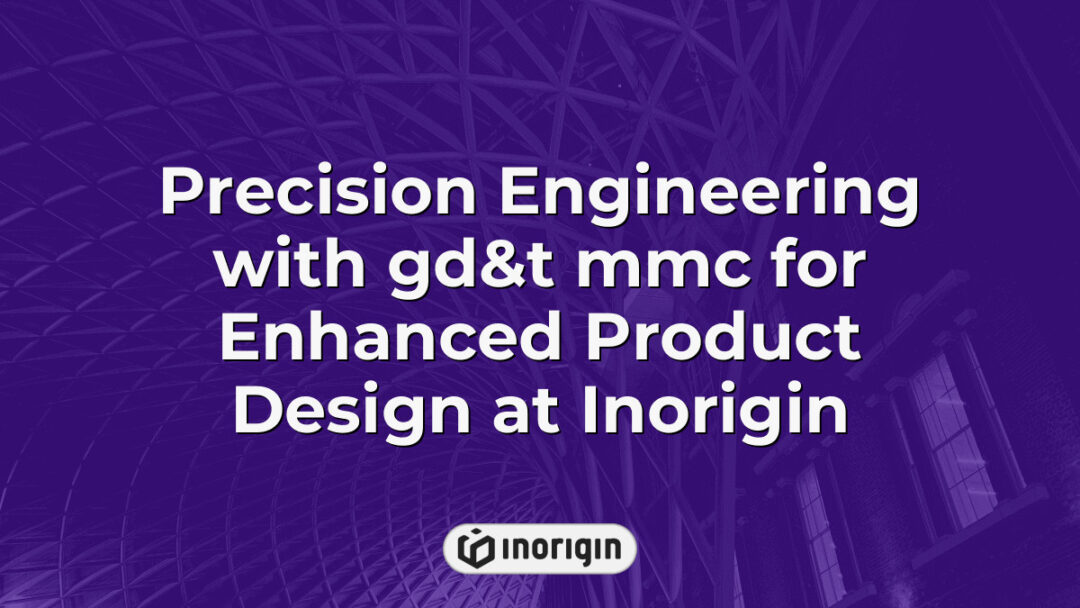The emergence of the K1 Max 3D Printer marks a significant milestone in the realm of additive manufacturing, blending cutting-edge technology with user-centric design principles. Equipped with advanced features such as rapid printing speeds, enhanced precision, and an expansive build volume, this innovative device caters to both amateur enthusiasts and professional designers alike. As industries increasingly embrace 3D printing for prototyping and production purposes, understanding the capabilities and implications of tools like the K1 Max becomes essential for navigating the future landscape of manufacturing. This article delves into the specifications, functionalities, and potential applications of the K1 Max 3D Printer, highlighting its role in shaping modern fabrication techniques and fostering creative possibilities across various sectors.
| Aspect | Key Takeaway |
|---|---|
| Overview | The K1 Max 3D printer delivers rapid printing speeds and a substantial build volume, making it a powerful tool for product design and engineering studios like Inorigin. |
| Printing Speed | With speeds up to 600 mm/s, the K1 Max accelerates prototype development without compromising precision, enhancing efficiency in professional workflows. |
| Build Volume | Its large build platform supports printing sizable, intricate designs in one piece, optimizing production timelines for complex engineering projects. |
| Advanced Features | Intelligent preheating, automated bed leveling, and touchscreen controls streamline operation and improve print reliability for advanced manufacturing tasks. |
| Filament Compatibility | The K1 Max accommodates a wide range of materials—including PLA, ABS, nylon, and polycarbonate—enabling versatility across diverse product requirements. |
| Setup and Calibration | Accurate assembly with automated bed leveling and precise nozzle height adjustment is essential to achieving superior print quality and maximizing printer lifespan. |
| Maintenance and Support | Routine maintenance combined with comprehensive manufacturer support and warranty options ensures long-term durability and consistent performance. |
Overview And Specifications Of The K1 Max 3D Printer
What features define the Creality K1 Max 3D printer’s capabilities and performance? The K1 Max exemplifies cutting-edge technology, particularly through its large build volume that accommodates diverse printing projects. Specifically engineered for efficiency, this model can achieve a remarkable speed of up to 600 mm/s max high speed, positioning it as an attractive option for both hobbyists and professionals seeking rapid production times. Furthermore, the advanced mechanics integrated into the K1 Max facilitate precision and reliability across varied materials, thereby expanding creative possibilities. Therefore, in evaluating the specifications of the K1 Max, it becomes evident that this printer not only meets but often exceeds industry standards for performance and versatility in additive manufacturing applications.
Setting Up The K1 Max: A Step-by-Step Guide
Setting up the K1 Max 3D printer serves as a crucial precursor to achieving optimal printing performance and ensuring the longevity of the device. Initially, it is essential to unbox all components carefully and verify that all parts are included based on the provided checklist. Subsequently, assembling the frame requires following the manufacturer’s guidelines precisely, paying particular attention to securing each joint effectively to maintain structural integrity. Once assembled, connecting power sources and initiating the auto leveling feature becomes imperative, as this functionality is designed to enhance print quality by compensating for any surface irregularities. As users move forward in their setup process, calibration of the extruder’s nozzle height will further improve adhesion between layers during prints. Consequently, an appropriate slicing software must be installed to prepare designs tailored specifically for use with Creality K1 Max 3D printers; thereby allowing users to harness advanced capabilities inherent within this model effectively. Ultimately, adhering closely to these outlined steps facilitates a seamless transition into utilizing this cutting-edge D printer technology efficiently.
Exploring The Advanced Features Of The K1 Max
The Creality K1 Max 3D printer stands at the forefront of modern additive manufacturing, exhibiting a symphony of advanced features that cater to both novice users and experienced professionals alike. With its sleek design, reminiscent of a futuristic sculpture, this machine encapsulates the essence of high-speed production through its remarkable capability to achieve speeds upwards of 500 mm/s. This rapid performance not only accelerates the print process but also redefines expectations in terms of efficiency and precision. Additionally, the inclusion of an intelligent preheating system ensures optimal material flow and adhesion during printing, while user-friendly touchscreen controls facilitate seamless navigation through complex functions. As exploration into the K1 Max’s capabilities continues, it becomes apparent that features such as automated bed leveling and customizable print settings significantly enhance the overall user experience, rendering this 3D printer an invaluable tool in various applications ranging from prototyping to intricate art projects. Ultimately, the integration of these advanced functionalities transforms traditional notions of 3D printing into a dynamic realm where creativity and technology coalesce harmoniously.
Optimization Tips For High-Quality 3D Prints
The optimization of high-quality 3D prints represents a critical endeavor in the realm of additive manufacturing, functioning as an intricate dance between technology and precision. Within this ballet, the Creality K1 Max emerges as a pivotal performer, boasting capabilities such as high speed and a large printing size that set it apart from its counterparts. It is essential to recognize that optimizing settings on this machine involves not only adjustments to print speed but also careful calibration of temperature and material selection; each element acts like a brushstroke in the broader canvas of a successful print. Furthermore, attention should be given to layer height and infill density, both significant contributors to the final aesthetic quality and structural integrity of printed objects. The synergy among these factors galvanizes the potential for producing detailed models that resonate with emotional depth while showcasing the advanced capabilities inherent within modern 3D printing technology. Through strategic implementation of these tips, practitioners can unlock the full potential of the Creality K1 Max, transforming raw materials into intricate artifacts that symbolize creativity and innovation in engineering design.
Troubleshooting Common Issues With The K1 Max
Troubleshooting common issues with the Creality K1 Max 3D printer involves a systematic approach to identify and rectify problems that may arise during operation. Initially, it is essential to address the calibration of the printer; improper bed leveling can lead to adhesion issues and uneven prints. Moreover, insufficient or excessive nozzle temperature can contribute to filament jamming or poor layer adhesion, indicating that monitoring optimal temperature settings is crucial for achieving desired results. Furthermore, design verification plays a pivotal role in ensuring that print files are adequately prepared prior to printing; corrupt or poorly designed models often compromise print quality and accuracy. Transitioning from hardware observations to software aspects highlights the importance of utilizing reliable slicing software suitable for the K1 Max model, as discrepancies in slicer settings might result in unexpected behaviors during the printing process. Adhering to these troubleshooting strategies facilitates more efficient resolution of frequent challenges encountered by users of the Creality K1 Max d printer.
Frequently Asked Questions
What Types Of Filament Are Compatible With The K1 Max 3D Printer?
The K1 Max 3D printer stands as a formidable instrument in the realm of additive manufacturing, and its compatibility with various filament types enhances its versatility across diverse applications. First and foremost, materials such as polylactic acid (PLA) serve as commonly utilized filaments due to their ease of use and biodegradability. In addition to PLA, acrylonitrile butadiene styrene (ABS) offers robust characteristics that enhance structural integrity; however, it necessitates higher temperatures for optimal printing conditions. Furthermore, advanced users may explore engineering-grade filaments like nylon or polycarbonate, which provide enhanced strength and thermal resistance, catering to demands where durability is paramount. Transitioning from conventional options, specialty filaments such as composite blends infused with metals or carbon fibers are becoming increasingly popular among professionals seeking unique aesthetic qualities alongside superior mechanical properties. Thus, understanding the filament compatibility of the K1 Max 3D printer not only broadens the scope for creativity but also serves functional needs within various sectors ranging from prototyping to final product manufacturing. The selection process remains pivotal, influencing both print quality and material performance in practical applications.
What Is The Estimated Lifespan Of The K1 Max 3D Printer?
The estimated lifespan of the K1 Max 3D printer is a critical factor that potential users often consider, particularly given concerns regarding investment longevity and operational reliability. While some may argue that an average lifespan of three to five years for consumer-grade 3D printers suggests limited durability, it is important to recognize that various contributing factors can significantly influence this time frame. Specifically, regular maintenance practices, quality of components used in production, and frequency of use play pivotal roles in determining how long the unit will perform optimally. Notably, advancements in materials and engineering design specific to the K1 Max enhance its resilience compared to earlier models. Therefore, with diligent care—including routine cleaning of moving parts and timely replacement of consumables—the lifespan can extend substantially beyond initial expectations. Ultimately, understanding these dynamics allows users not only to gauge potential longevity but also empowers them to implement strategies that optimize performance throughout the device’s operational life.
Are There Any Specific Software Recommendations For Slicing Models For The K1 Max?
When engaging with the K1 Max 3D printer, selecting appropriate slicing software becomes a crucial step in optimizing performance and achieving desired print outcomes. The choice of software significantly influences not only the efficiency of the printing process but also the quality and precision of the final product. Popular recommendations for slicing models tailored to this particular printer encompass several robust options such as Cura, PrusaSlicer, and Simplify3D. Each software presents its unique interface and features; for instance, Cura is widely lauded for its user-friendly design and extensive library of pre-configured profiles that streamline workflow while ensuring compatibility with diverse filament types.
Transitioning into more advanced functionalities, both PrusaSlicer and Simplify3D offer sophisticated tools that cater to experienced users seeking greater control over intricate settings. These applications provide detailed customization capabilities, allowing operators to manipulate layer heights, infill patterns, and support structures according to specific project requirements. The integration of these cutting-edge technologies affords users the opportunity to refine their prints at an unprecedented level. Consequently, careful consideration of slicing software ultimately shapes the user’s experience with the K1 Max 3D printer by bridging technical nuances between digital designs and physical creation processes. Thus, meticulous selection aligned with individual needs can enhance overall operational effectiveness when utilizing this advanced additive manufacturing tool.
Can The K1 Max Be Used For Printing Large Objects, And If So, What Is The Maximum Print Size?
The K1 Max 3D printer is ingeniously designed to cater to a diverse range of printing needs, including the creation of large objects. With its spacious build volume, this model reportedly boasts an impressive maximum print size that accommodates substantial projects, effectively broadening its applicability for both hobbyists and professionals alike. Specifically, the K1 Max can facilitate prints up to [insert specific dimensions here], allowing users the flexibility to execute larger designs without necessitating assembly or post-processing that often accompanies multi-part prints. This characteristic not only enhances efficiency but also ensures structural integrity in larger constructs. Consequently, as 3D printing technology continues to evolve, the ability of the K1 Max to manage oversized creations stands out as a significant advantage, reinforcing its status within competitive settings and advanced workshops where spatial capacity remains paramount.
What Kind Of Support And Warranty Options Are Available For The K1 Max 3D Printer?
The K1 Max 3D printer offers a range of support and warranty options designed to enhance user experience and ensure product reliability. Initially, customer support is accessible through multiple channels, including online resources such as forums, instructional videos, and dedicated help desks that cater to technical inquiries. Additionally, the manufacturer provides comprehensive documentation covering setup procedures, troubleshooting guidelines, and maintenance tips which facilitate effective usage. Warranty coverage for the K1 Max typically spans one year from the date of purchase; this includes parts replacement for manufacturing defects under specified conditions. Furthermore, users have access to extended service plans that can be purchased separately to provide additional peace of mind regarding long-term operation. Such provisions not only bolster consumer confidence but also reflect an understanding of customer needs in maintaining optimal performance in complex technological equipment like the K1 Max 3D printer. Thus, these elements collectively contribute to a robust framework aimed at addressing potential issues while offering reassurance during the ownership experience.
Conclusion
The K1 Max 3D printer epitomizes advanced technological prowess in additive manufacturing. Its sophisticated features and user-friendly setup facilitate an enriched printing experience, while optimization strategies effectively enhance print quality. By addressing common challenges with tactful solutions, this device continues to inspire innovation within the realm of 3D printing endeavors.
Related posts:
- Creality 3D Printer Technology Transforming Precision and Innovation in Product Design
- Creality Print Techniques for Precision and Reliability in Advanced 3D Prototyping
- Precision Engineering Breakthroughs with a Big 3D Printer in Product Design
- Precision Features and Model Comparisons of 3D printer creality for Advanced Prototyping
- Creality 3D Printing Innovations Powering Professional-Grade Prototyping and Production
- Optimizing Print Quality and Performance with Crealty 3D Printer Models




